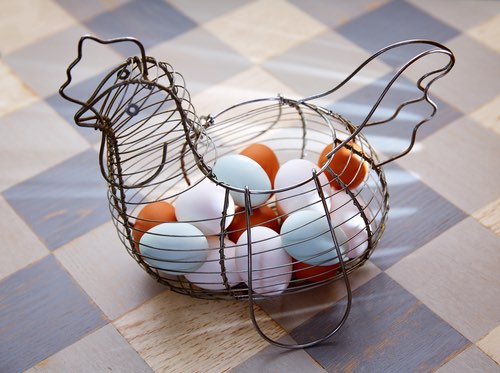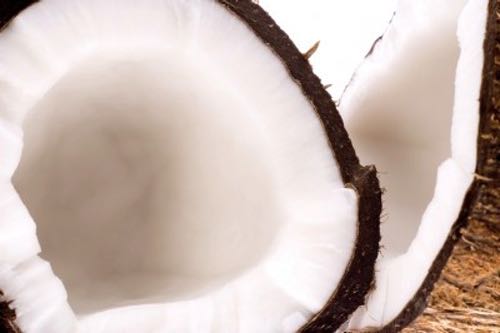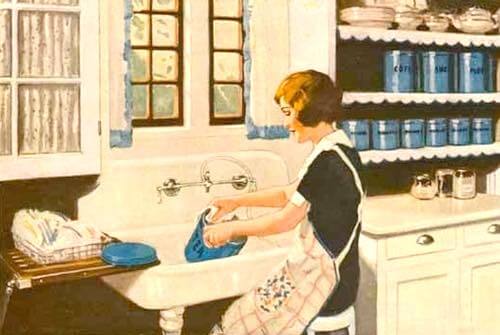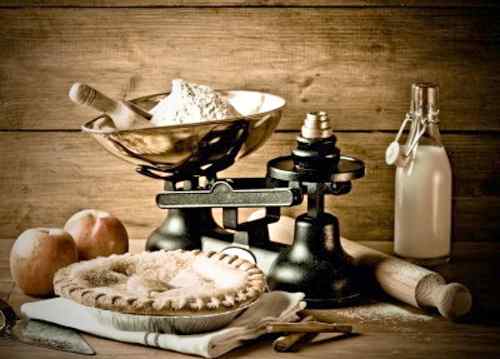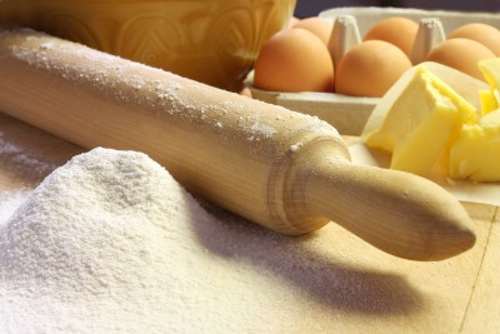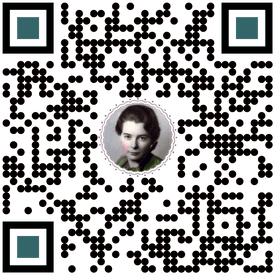- Home
- Recipe Help & Misc
- Laundry Secrets
Laundry Secrets
Grandma's relied on her laundry secrets to get her clothes clean and mended. She didn't have our modern conveniences like automatic washing machines, clothes dryers, and reliable dry cleaning. She had her washtub, washboard, and clothesline.
However, thanks to the old fashioned cleaning tips she collected, her laundry was always fresh, clean, and stain free. Now, you can experiment with using the same methods on your stubborn laundry problems.
Grandma's Laundry Secrets
Young's Demonstrative Translation of Scientific Secrets (1861)
Buckeye Cookery and Practical Housekeeping (1877)
The White House Cook Book (1913)
Mom's Recipe Scrapbooks (1920s
The Perry Home Cook Book (1920)
 Grandma's Old Time Laundry Secrets Come In Handy
Grandma's Old Time Laundry Secrets Come In Handy(Source: ©cathy-yeule/123RF.com)
To Remove Ink, Wine, or Fruit Stains
Saturate well in tomato juice; it is also an excellent thing to remove stains from the hands.
To Remove Stains of Claret Wine
As soon as claret is spilt, cover spot with salt. Let stand a few minutes, then rinse in cold water.
To Take Spots From Wash Goods
Try rubbing them with the yolk of egg before washing.
To Remove Fruit Stains
Pour boiling water over stained surface, having it fall from a distance of three feet. This is a much better way than dipping stain in and out of hot water; or wring articles out of cold water and hang out-of-doors on a frosty night.
Practical Mending Tip
This might be one of the most practical of all Grandma's old time laundry secrets when practiced.
Never put away clean clothes without examining every piece to see whether they are in any way out of order. Much time is saved later.
Novel Dress Mending
A unique way of mending a woolen or silk dress in which a round hole has been torn, and where only a patch could remedy matters, is the following:
The frayed portions around the tear should be carefully smoothed, and a piece of the material, moistened with very thin mucilage, placed under the hole. A heavy weight should be put upon it until it is dry, when it is only possible to discover the mended place by careful observation.
Worn Sheets
When sheets are beginning to wear in the middle, sew the selvage sides together and rip open the old seam, or tear in two and hem the sides.
To Remove Bad Smells
Articles of clothing, or of any other character, which have become impregnated with bad-smelling substances, will be freed from them by burying for a day or two in the ground. Wrap up lightly before burying.
To Remove Grass Stains
Two handy methods:
- A simple way to remove grass stains is to spread butter on them, and lay the article in hot sunshine.
- Wet with lemon juice, sprinkle with salt, and spread in sun. You might also try using soap and cold water.
To Remove Mud Stains
Mud stains on silk can generally be removed by rubbing with a piece of flannel.
To Remove Ink Stains
Three clever methods to try:
- Ink stain can be removed by dipping stain in hot tallow, then wash out tallow, and ink will be removed.
- Wet with spirits of turpentine; after three hours, rub well.
- Ink stains may be removed by covering spots with borax and saturating with peroxide.
To Renew Old Crepe material
Place a little water in a teakettle, and let it boil until there is plenty of steam from the spout; then, holding the crepe in both hands, pass it to and fro several times through the steam, and it will be clean and look nearly equal to new.
To Soften Jeans and Cotton Sheets
Of all the old fashioned laundry secrets, this is the one that people search for most.
Add 1/4 to 1/2 cup of salt to the detergent when washing.
Powdered Starch For Stains
If applied immediately, powdered starch will take fruit stains out of table linen. Left on the spot for a few hours, it absorbs every trace of the stain.
To Remove Iron Rust
Lemon juice and salt will remove ordinary iron rust.
To Remove Mildew Stains or Iron Rust
For mildew stains or iron rust, mix together soft soap, laundry starch, half as much salt, and the juice of a lemon. Apply to the spots and spread the garment on the grass.
To Remove Mildew
Rub the mildew spot with yellow soap, wash, and while wet rub powdered chalk into it and cover with chalk. Lay article on grass in sun, sprinkle with clear water. Repeat if necessary.
To Remove Old Mildew Stains
Old mildew stains may be removed by rubbing yellow soap on both sides and afterwards laying on, very thick, starch which has been dampened. Rub in well and expose to light and air.
To Remove Candle Grease
Candle grease from tallow candles yields to a warm iron. Place a piece of blotting paper or other absorbing paper under the absorbing fabric; put a piece of the paper also on the spot, apply the warm iron to the paper and as soon as a spot of grease appears, move the paper and press again until the spot disappears.
Remove Grease From Clothes
Two good methods:
- Mix four tablespoons of alcohol with one tablespoonful of salt; shake together until the salt is dissolved and apply with a sponge.
- Cut a very ripe tomato and rub material over a kitchen table. Tomato juice will also remove stains from and whiten the hands.
To Remove Wagon Axle Grease
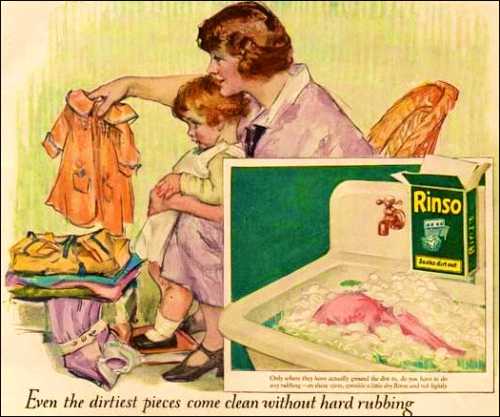 Rinso Soap Illustration circa 1920s
Rinso Soap Illustration circa 1920s(PD Source: Vintage Magazine)
Lard will remove wagon grease. Rub the spot with the lard as if washing it, and when it is well out, wash in the ordinary way with soap and water until thoroughly cleansed.
To Make Linen Beautifully White
Prepare the water for washing by putting into every ten gallons a large handful of powdered borax; or boil with the clothes one teaspoonful of spirits of turpentine.
To Remove Tar From Cloth
Saturate the spot and rub it well with turpentine, and every trace of tar will be removed.
To Clean Flat Irons
Beeswax and salt will make your irons as smooth and clean as glass. Tie a lump of wax in a rag and keep it for that purpose. When the iron is hot, rub it first with the wax rag, then scour with a paper or cloth sprinkled with salt.
To Remove Blood From Clothing
Use cold water, then soap and cold water.
To Remove Chocolate or Cocoa Stain
Use borax and cold water.
To Remove Coffee and Tea Stains
Use boiling water; if with cream, use cold water, then boiling water.
To Remove Cream and Milk Stains
Use cold water, soap.
To Remove Perspiration stain
This old fashioned laundry secret relies on the fact that sunlight is an effective bleach. That's why clothing hung on a line will always smell fresher than those from a clothes dryer.
Use soap and warm water; bleach in the sun.
To Remove Vaseline Stain
Try using turpentine or kerosene.
To Wash Stained Clothes
Soak all clothes overnight in cold water, drain off in morning. All stains will wash out easier. Separate white and colored clothes, of course.
Laundering Table Linen
Linens should last a lifetime if they are given the proper care. They should be laundered with great care, ironed on the right side and then on the wrong. If white linen is put away for a time, it should be rolled in blue paper, which prevents it from becoming yellow.
To Wash Flannels
Wash first in warm soapsuds and rinse them in warm water, having the water neither too hot nor too cold.
When Silk Turns Yellow
Soak in sour milk overnight, then wash and dry.
To Remove Moth Ball Odor
Clothes and other items should be aired outside on dry, breezy days until the odor of moth balls disappears. Bring inside when rain threatens and at night. You can also try adding one cup of white vinegar to the wash water when washing your clothes.
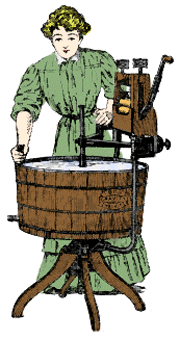
Warning
Always use the old fashioned laundry secrets with caution and common sense, and always AT YOUR OWN RISK.
There is NO GUARANTEE that these secrets will work on today's synthetic materials, and some tips methods might even ruin them.
About Grandma's Laundry Secrets
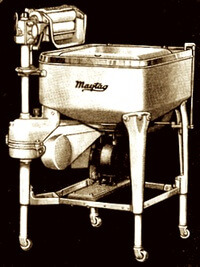 Vintage Maytag®
Vintage Maytag®Grandma always kept these old fashioned laundry secrets handy. Ink from quill pens, soot from the fireplace, grease from buggy axles, and mildew from a damp house were the biggest threats to clean clothes in her day.
The laundry secrets for removing rust stains also proved useful, and with nine lively kids there were always grass stains to deal with, and those stains simply had to come out. New clothes didn't grow on trees!
Grandma always got stubborn stains out, and the torn clothes always got mended. Now, you can try the same tips that she used on your stubborn, hard-to-remove stains.
Enjoy reading and experimenting with these old time laundry secrets. You might find a tip or two that will help to solve your stubborn cleaning problem.
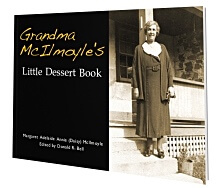
Sign Up now for GRANDMA'S DESSERT CLUB and download your FREE PDF COPY of Grandma McIlmoyle's Little Dessert Book. Also receive my regular Bulletin featuring classic recipes and nostalgia.
